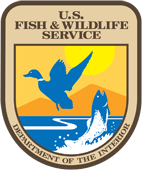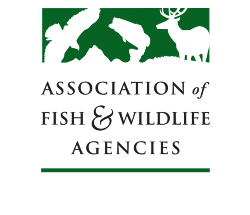From Idea to Impact

2025 Americans’ Attitudes Toward Hunting and Shooting Sports
During the National R3 Symposium in May, the Council to Advance Hunting and the Shooting Sports released the findings of the 2025 Americans’ Attitudes Toward Hunting and Shooting Sports report. While support for legal regulated hunting and recreational shooting sports remains strong, we continue to see a slight decline year over year. The report also identified significant growth in support within the Hispanic and Latino communities. For more, view the entire report on the Council’s website. 2025 Americans’ Attitudes Toward Hunting and Shooting Sports
To learn more about Council research efforts, please contact Scott Lavin at Scott@cahss.org
How to Welcome New Shooters
Learn more at https://www.outdoorstewards.org/welcome-new-shooters/
National Hunting and Shooting Sports R3 Practitioner’s Guide
With support from the Multistate Conservation Grant Program, the Council to Advance Hunting and the Shooting Sports collaborated with R3 practitioners nationwide over two years to develop the National Hunting and Shooting Sports R3 Practitioner’s Guide. This comprehensive resource serves as a central hub for core materials, research, case studies, best practices, and foundational R3 guidance. It streamlines R3 implemen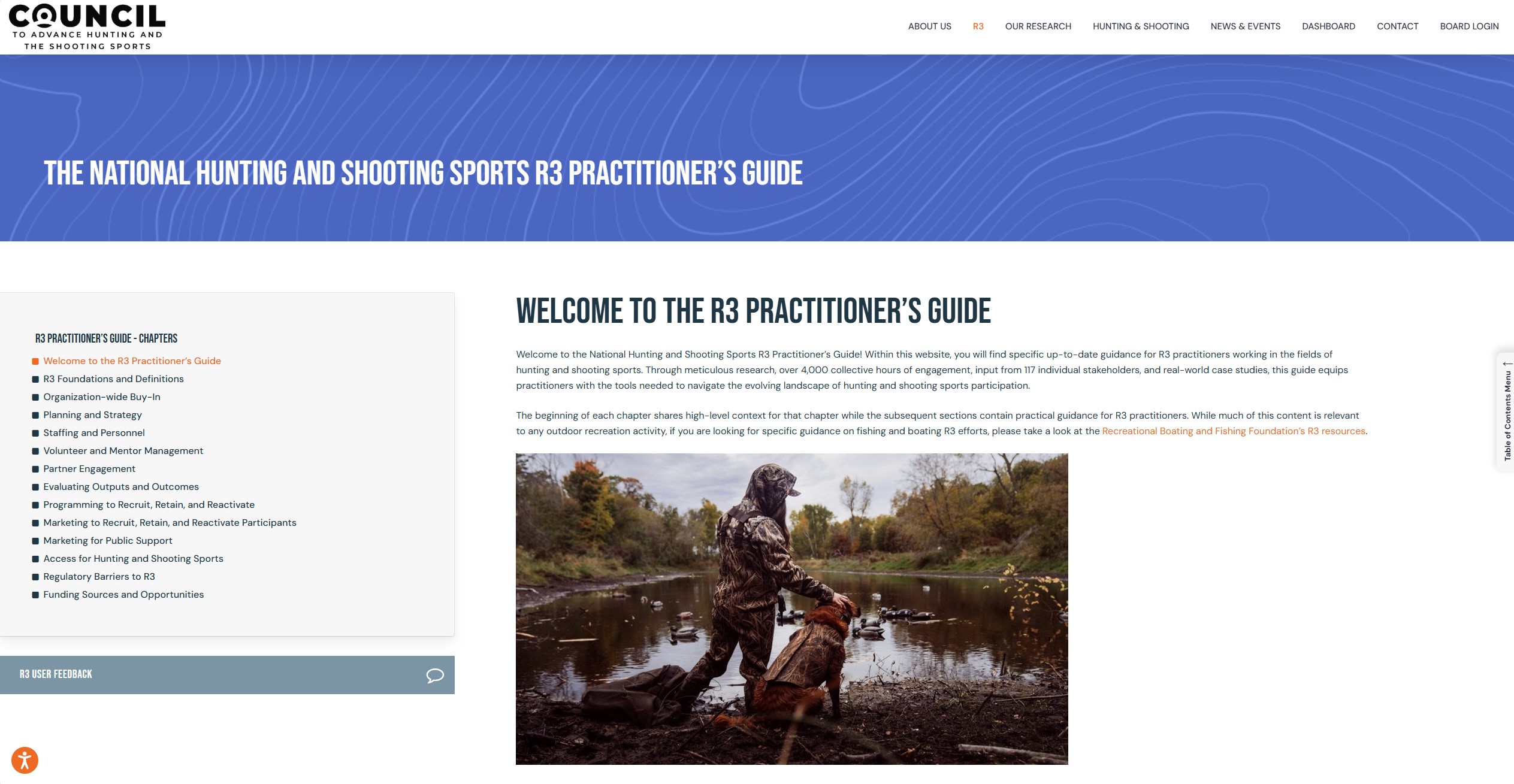
If you have any questions or recommendations, please contact Taniya Bethke at Taniya@CAHSS.org
LEARN MORE>
What motivates today’s hunters and target shooters?
For years, marketers and R3 practitioners referred to the five “stages” or “phases” that hunters evolve through in their lifetimes in the activity. However, these phases are based on a single qualitative study published 38 years ago (Jackson et al, 1984) that focused on just Wisconsin duck hunters. Considering the significant cultural, participatory, and communications shifts since 1984, and that women and other demographics are critical components of the hunting community, the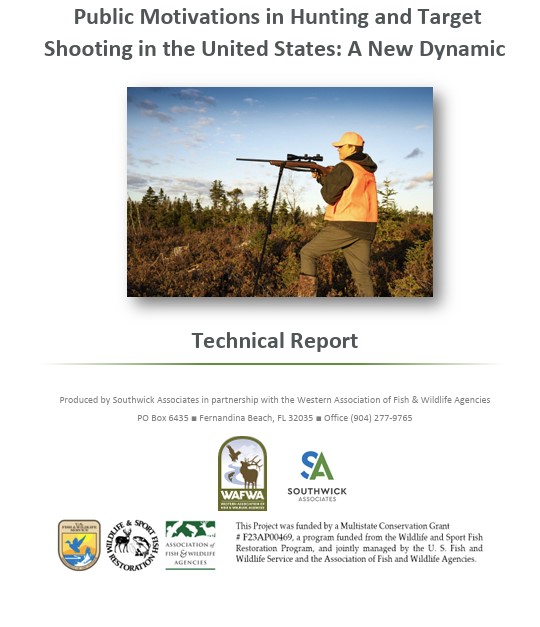
Approximately 4,200 U.S. hunters and target shooters were surveyed nationally regarding their current and previous motivations for participating in hunting and/or target shooting. Using the latest statistical techniques, respondents were separated into distinct segments, referred to as personas, based on their shared motivations to hunt and shoot. The survey also explored motivations when they first began and how these might have changed, which yielded a critical insight: • Do not assume that hunters and target shooters’ motivations follow any type of prescribed evolutionary path as they age. It is not that simple. Many different reasons motivate people to start hunting and shooting. Then, motivations to participate evolve in different directions and at different paces for many while others’ motivations remain static.
Public Perceptions About Southeastern State Fish & Wildlife Agencies
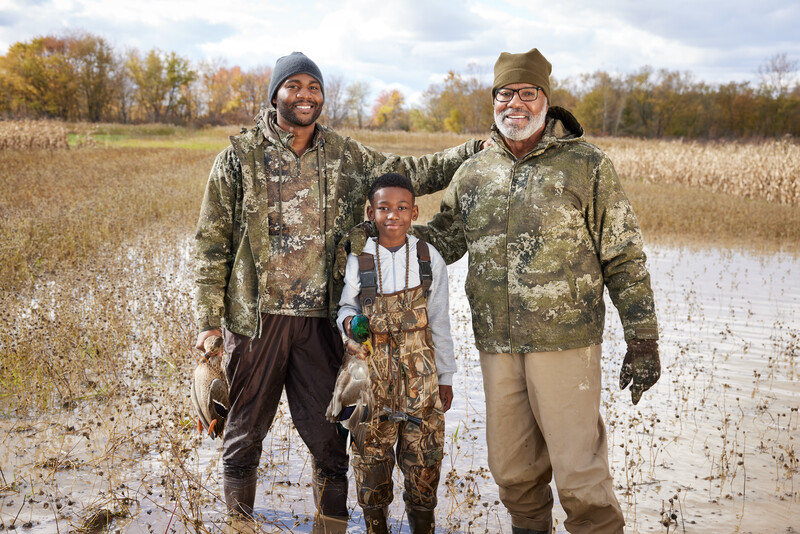
To effectively manage fish and wildlife resources, an agency must understand its stakeholders. For clarity, we define stakeholders as anyone who has an interest in the decisions, actions, or outcomes of the state natural resource agency. These include, but are not limited to, license buyers. In October 2023, on behalf of 12 states within the Southeastern Association of Fish and Wildlife Agencies (SEAFWA), a survey was fielded to both recreational license holders and a general population panel1 inquiring about several major topics, including:
- How relevant their state fish and wildlife agency is to them,
- How important the various responsibilities handled by their state fish and wildlife agency are.
- Whether they believed the state was doing a good job of fulfilling these tasks,
- Funding priorities,
- Interactions with the agency, and more.
Respondents were split into three activity groups:
- Licensed Participants: Hunters and anglers who purchased a hunting and/or fishing license per data provided by each state fish and wildlife agency. Roughly 15% of the U.S. population fishes and 6% hunts
- Unlicensed Participants: People who participated in at least one outdoor activity except hunting or fishing in the past three years. An estimated 40% of the U.S. belongs in this category.
- Unlicensed Nonparticipants: Individuals from the general population panel who did not participate in any outdoor-related activity in the past three years. Approximately 45% of the U.S. population falls into this category.
These results reflect the opinions of the survey respondents. This does not mean that their responses accurately reflect the actual responsibilities, accomplishments, and needs of state fish and wildlife agencies. However, the public’s perception of state agencies is their reality. To the extent that the public's perceived reality does not match what state fish and wildlife agencies see, a need for increased engagement and communication exists to correct misconceptions and improve education. The results of this project are to help state fish and wildlife agencies understand how to better engage and interact with the public. State-specific results have been shared directly with each state agency.
